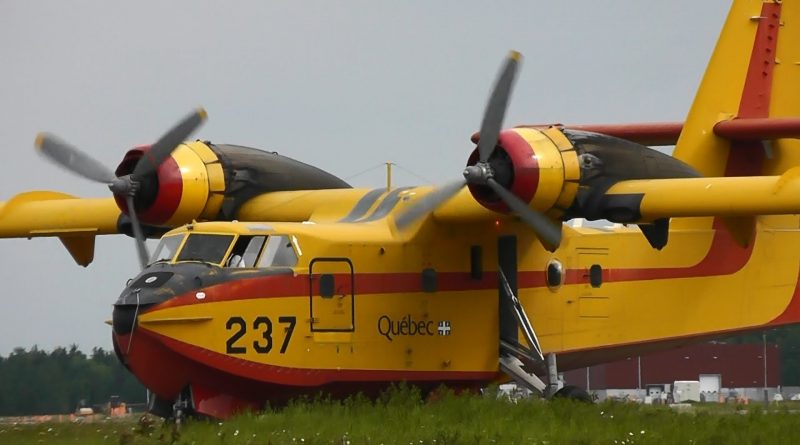The difficult beginnings of the CL-215 (Part II)
Mistakes and savings that sow discord
On October 23, 1967 at 10:00 am the CL-215 flew for the first time from Cartierville Airport and Canadair Test Pilot Chief Bill Longhurst was in command of the aircraft. registered CF-FEU. The director of the government air service, Paul Gagnon, was absent during the inaugural flight. It was while looking at the photographs of the first flight, that an employee of Mr. Gagnon pointed out to him that the rudder was abnormally pointed right during takeoff. Despite his insistence, the pilot Bill Longhurst refused to provide an explanation to Mr. Gagnon. Relations between Mr. Gagnon and Canadair, which had always been good until then, began to deteriorate rapidly.
It was not until a month later that Paul Gagnon learned to his dismay the problem that affected the CL-215: an error had crept into the calculation of the lever arm of the empennage and the distance between the wing and control surfaces was too short of 5 feet. Because of this error, the CL-215 was almost impossible to control in normal flight situations and presented a serious threat of crushing in the event of engine failure. The tests were interrupted one month after the first flight.
Since the contract with the Government of Quebec provided for the delivery of 10 CL-215 aircraft in 1968, these aircraft were already on the assembly line, some of them at very advanced stages. Canadair chose to increase the size of the control surfaces that were located on the empennage and quickly set to work to revive production and trials resumed in January 1968.
This design error had the effect of seriously undermining Mr. Gagnon’s confidence in Canadair and its ability to carry out the much needed tanker program. Then it’s the CL-215’s engines that will add to the concerns as they failed five times in just 83 hours of flight. This situation forced the Ministry of Transport to look into the situation and two investigators were sent to the supplier in Florida to investigate the cause of those many breakdowns. If the investigation failed to establish the cause of the repeated failures, it reveals that the engines used are the first of the 43 third versions of the R2800 Pratt and Whitney and they were manufactured in 1943 for B26 . Yet the contract signed by the Quebec government with Canadair stipulated that the CL-215s should be equipped with the latest version of the R2800 which bears the designation C Series. It must be said that the engines of the Second World War cost Canadair $ 11,000 instead of $ 60,000 for the last generation. Mr. Gagnon then expressed his concerns to Canadair President Fred Kearns, who told him not to worry about the CL-215 and that everything would be fine.
In Part III : An unexpected denouement.
>>> Follow us on Facebook and Twitter

